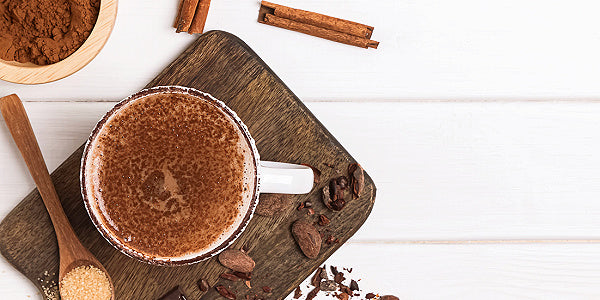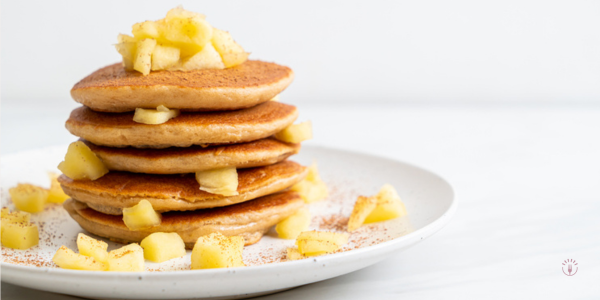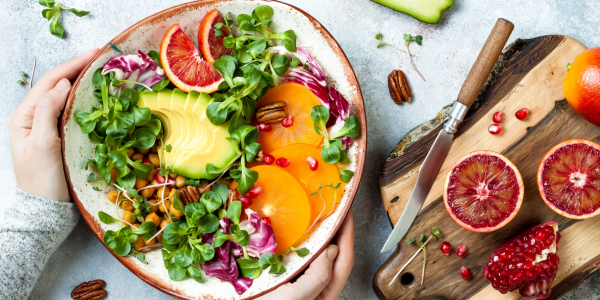
Winter highlights some of the best holiday flavors. So, if you’ve waited until Christmas flavors come to fully relish holiday foods, the time has come!
Although emphasized during a certain season, you can make the most of these winter, holiday, and Christmas flavors year-round. And with these ideas, you won’t want to wait until next year to enjoy them again!
Exploring Christmas, Holiday, and Winter Flavors
From apple spice to pumpkin spice to cinnamon spice, holiday flavors can get confusing! Luckily, each has its unique time and season, and many winter flavors pair well with others. Knowing when each flavor has its moment can help you take advantage before popular products disappear.
Typically, the “spices”—apple, pumpkin, and cinnamon—are associated with late fall and early winter, cranberry is associated with Thanksgiving, and flavors like peppermint and gingerbread are enjoyed around Christmas. Hot chocolate is enjoyed all winter long, significantly when temperatures drop. However, there are no formal rules for when you’re allowed to enjoy these tasty seasonings, spices, and special flavors.
One perk of enjoying your favorite seasonal flavors in-season is that seasonal foods are often at their nutritional peak. Alternatively, you can learn to recreate your favorite flavors from home any time of the year! Homemade creations can be customized to meet your health needs while containing the flavors you know and love.
If you’re having trouble locating seasonal ingredients or identifying seasonal flavors, try looking for signs and displays at your local grocery store. Often, stores pair products that make sense for the holidays so you have easy access. For example, before Thanksgiving, you may see graham cracker crumbs and pumpkin puree placed together on display for easy access, so you don’t have to hunt for pumpkin pie ingredients individually.
Another way to spot holiday flavors is to look for the words “limited edition” on the package. Many companies release a unique flavor around the holidays, like General Mills’ Pumpkin Spice Cheerios. This can be a perfect way to experience a food you usually or routinely eat in a new way.
‘Tis the Season for Christmas Flavors
Beyond red and green foods, many flavors just scream “Christmas.” Gingerbread is an obvious favorite, while flavors like chestnuts may be more subtle.
Candy Cane
In the United States, over a billion candy canes are produced yearly. The demand for this striped candy rises swiftly, starting after Thanksgiving until the weeks leading up to Christmas. Some are eaten, while others are hung decoratively from Christmas trees.
Since they are mostly sugar, syrups, and food coloring, candy canes aren’t exactly considered “healthy.” If you’re keen on their flavor but don’t want to risk the added sugars, you can focus on one of the candy cane’s most defining flavors— peppermint. Add a drop or two of peppermint extract to hot chocolate or some of your favorite recipes for a minty twist. Or, simply enjoy a mini candy cane to keep calories and sugars to a more manageable level.
Gingerbread
Gingerbread-flavored foods get their signature taste from a collection of warm spices, including ginger (their namesake), cinnamon, allspice, and cloves. And one key difference between gingerbread cookies and regular cookies is that molasses is used as the sweetener, which helps to create their recognizable dark brown color.
And is it Christmas if there aren’t gingerbread cookies to decorate? If you’re looking for a healthy twist on the more traditional gingerbread cookie, try a healthy holiday gingerbread recipe. The icing is optional if you want to cut calories, but decorating each cookie with icing and holiday sprinkles can be a fun family activity.
Since gingerbread’s spices play an essential role in its flavor, its flavor can easily be replicated in other treats and snacks. For example, you can create gingerbread energy balls or a protein-packed gingerbread smoothie.
Roasted Chestnuts
Roasted chestnuts are such a beloved Christmas flavor that they made it into the lyrics of “The Christmas Song.” Chestnuts are bitter when raw, but roasting them releases a sweet flavor and creates a softer texture.
Roasted chestnuts require only one ingredient (any guesses?), are easy to make at home, and are naturally nutrient-rich. Plus, the smell they create when cooking has been described as warm, comforting, and reminiscent of winter markets.
Eggnog
Eggnog has become such a popular beverage over the years that it’s made its name as a unique flavor. Around Christmastime, it’s common to see coffees, creamers, cookies and candies of the eggnog varieties. Recently, protein powder brands, like Clean Simple Eats, have been jumping on the bandwagon for this beloved flavor.
If you’re looking for eggnog flavors, remember that eggnog tea may provide the taste you're looking for without all the calories. You can also create your own healthy eggnog recipe at home.
Holiday Flavors to Celebrate
Starting in September, holiday season flavors start to take center stage. They dominate many classic holiday recipes and help make the holidays meaningful.
Apple
Apples are in season from late summer into early November, and apple picking is a perfect activity to welcome in the holiday season. Popular late-season varieties (available in September and October) include Honeycrisp and Honeygold. More obscure varieties, but aptly named as the season changes into winter, include Frostbite and SnowSweet.
Apple-spiced products, such as ciders and donuts, abound as the autumn season slowly turns to winter. Apples contain natural sugars, which create a natural sweetness, meaning just apples and spices can create the perfect dessert!
Try perfectly spiced and baked cinnamon apples, a sweet treat with another seasonal sensation (cranberries).
Cinnamon
As mentioned above, cinnamon is featured in many popular holiday dishes. It’s often combined with apple, along with other warm spices, like nutmeg and cloves. It’s also featured heavily from Thanksgiving (such as in sweet potato dishes) to Christmas (like in gingerbread).
Pumpkin
Although Starbucks features pumpkin spice as early as August, some consumers wait until the pumpkin carving (during October or around Halloween) to introduce pumpkin flavors into their diet. Others wait until Thanksgiving to savor their first slice of pumpkin pie.
While some would argue that pumpkin is a quintessential fall flavor, it’s technically considered a winter squash. This means it can be enjoyed all winter long, in both pumpkin-flavored foods and drinks like a low-sugar pumpkin spice latte.
Cranberry
Known for their sweet and tart flavor, cranberries typically hit the scene starting in November. They are most closely associated with the Thanksgiving holiday and can be incorporated in everything from main dishes (like the turkey) to side dishes (such as cranberry sauce or salad).
Why wait until the turkey’s sliced to enjoy cranberry flavors? Try introducing them at breakfast in a cranberry orange yogurt parfait, or a filling and festive holiday Greek yogurt bark.
Winter Flavors to Keep You Cozy
Wondering which flavors to focus on during winter months? The following flavors often characterize the colder months, but can be used year-round in baking endeavors.
Peppermint
While some would argue that peppermint is a Christmas flavor, it’s popular in gums and candies no matter the time of year. Since it has a stronger flavor than mint, it’s well-utilized in desserts and drinks throughout the holiday season.
Add peppermint to both hot and cold drinks, such as hot cocoa or a high-protein chocolate mint smoothie. You’ll likely be able to find it in some of your favorite store-bought confections, too.
A fan favorite is Talenti peppermint bark gelato, which supposedly “tastes like winter in a pint.” This winter, consider swapping your bowl of vanilla ice cream for this gluten-free peppermint flavored ice cream, complete with flakes from chocolate chips.
Cocoa
Cocoa has a moment as the temperatures drop and becomes the beverage of choice as winter weather rolls in. However, hot chocolate (made from melted chocolate) and hot cocoa (made from powdered cocoa mixes) have become such popular flavors that the beverage’s flavor profile has been replicated in everything from beer and popcorn to chocolate candies and pastries.
Even cold foods are taking it on, with frozen hot chocolate becoming a craze, hot cocoa milkshakes making it onto menus, and hot chocolate ice cream hitting shelves. Many creations include marshmallows or marshmallow crème, an obvious hot cocoa pairing!
Unfortunately, many of these hot cocoa creations are loaded with sugar, so you may opt for a healthy hot cocoa if you’re aiming for optimal wellness over the winter season.
Citrus
Citrus may seem like a surprising winter pick, but many varieties hit their seasonal peak around December. Oranges, in particular, pair well with winter festivities. Add slices to mulled spices, some juice to hot chocolate, or add dried oranges to your Christmas tree. You really can’t go wrong when it comes to winter citrus!
Don’t know where to start with oranges in the winter? Pair it with two other fall and winter flavors (maple and cranberry) in a delicious yogurt parfait.
Winter, Holiday, and Christmas Flavors: Final Takeaways
The winter season features some enjoyable and festive flavors. Holiday flavors like pumpkin, cranberry, and gingerbread are more prominent, while winter flavors like citrus can be a more subtle nod to winter.
Some Christmastime drinks—like eggnog and hot chocolate—have become so iconic they’ve become flavors in their own right! No matter which is your favorite, there are many ways to make your favorite flavors healthier at home.







